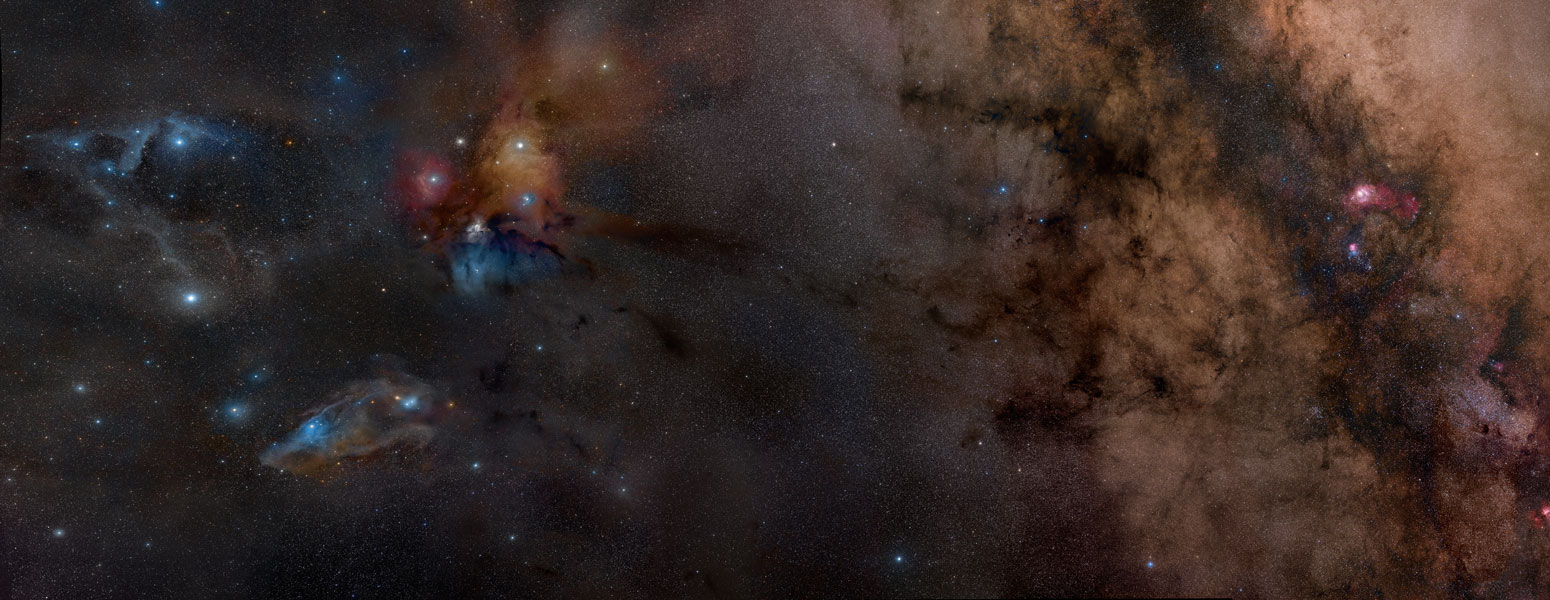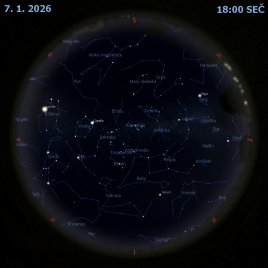Temná řeka v širokém poli

Uznání a copyright: Rogelio Bernal Andreo
Zdá se, že z našeho galaktického středu vytéká temná řeka a hned se vlévá do hvězdného pole plného fotogenických zázraků. Když zarolujete doprava, tak uvidíte spoustu těchto objektů včetně (dokážete najít?) jasné oranžové hvězdy Antares, modro(oké) mlhoviny koňská hlava, bílé kulové hvězdokupy M4, jasné modré hvězdné soustavy Rho Ophiuchi, tmavohnědé mlhoviny Dýmka, červené mlhoviny Laguna, červené a modré mlhoviny Trifid, červené mlhoviny Kočičí tlapka a mnohobarevného, ale pořád důležitého středu naší Galaxie. Tento širokoúhlý pohled zachycuje do jemných podrobností asi 50 stupňů noční oblohy, tedy 100 násobek úplňku, což pokrývá souhvězdí od Střelce (Sagittarius) přes Hadonoše (Ophiuchus) ke Štíru (Scorpius). Temnou řeku samotnou lze identifikovat jako hnědý prachový pás spojený s Antaresem, který zabírá asi 100 světelných let. Jelikož se prachový pás Temné řeky nachází asi jen 500 světelných let daleko, tak se pouze jeví jako most ke vzdálenějšímu Galaktickému centru, které se ve skutečnosti nachází asi 25 000 světelných let dále.
NASA Official: Phillip Newman Specific rights apply. NASA Web Privacy Policy and Important Notices
A service of: ASD at NASA / GSFC & Michigan Tech. U.
Odkaz na originální APOD


